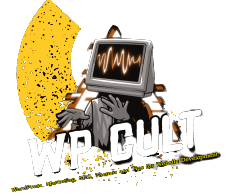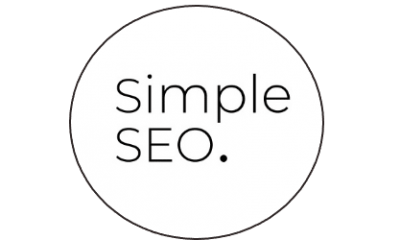Articles
Awesome list of top 28 social marketing resources
The content provides a detailed list of tools essential to digital marketing including areas of social automation, organic outreach, content creation, research, content discovery, and search engine optimization. Key tools like Hoot Suite for scheduling social media posts, Social Quant for driving engagement, Buzzsumo for content popularity, Envato for content creation, and SemRush for SEO analysis were highlighted as particularly useful in their respective fields.

Social Automation and Scheduling

- Hoot Suite – Our favorite tool for scheduling our social posts to sync between all our devices has to be Hoot Suite. It doesn’t take a second’s thought to make sure to post regular content to all of our platforms. A little-known benefit of the tool is that when used for social media outreach, you can schedule all your posts periodically so that your current followers aren’t bombarded all at once when you send tweet copies to twenty different influencers.
- Social Quant – NOW (Click Minded) – One of the single most effective social media tools behind our Breathe Life campaign. The tool is, in a sense, a bot that, based on your keyword research, performs a set amount of follows and unfollows per day. How well the tool performs in terms of engagement around your content relies on what you put in. For managing engagement and partnerships that might be generated by the tool, you’ll still need to take the time to form connections and follow up with those who want to know more about your project. At the moment, the tool only works on Twitter, and to date, I’ve not found a comparable tool for Instagram. As well as the tool works, I do think they could improve upon the billing and KPI dashboard from a usability perspective.
Organic Outreach, Research, and Content Discovery
- Social Bakers Analytics – Easily the most comprehensive tool we’ve used to find every popular Facebook, Twitter, and YouTube account worth knowing about, divided by sector, genre, and country. Whilst using this to find the most popular accounts out there will leave you at the mercy of their own advertising placement fees, the tool is best used when finding smaller niche communities to contact.
- Zest.Is – A human-curated tab takeover of the best digital marketing and tech articles, updated every day. The quality of the app is very high thanks to the curation aspect of the platform, so much so that you may even forget to check The Drum and MarketingLand at times because you’ll have already bookmarked so much reading material just from opening a new tab!
- Growth Hackers Community – An incredibly well-thought-out platform for content creation and curation. The highlight of Growth Hackers is the vast and varied range of marketers and senior entrepreneurs who are selected for regular AMAs. It is amazing how you can so seamlessly share your conversations straight to Twitter to show that you are talking to some of the most influential marketers today.
- FollowerWonk – Find the most relevant influencers in your sector by taking a list of common keywords used and organizing results by location and popularity. Also provides wider analytics on your own account as well as that of competitors.
- Buzzsumo – Discover the most popular content in the past year for your sector; the free plan is limited to only one page of results per day. Make sure to take into account that any fake blogging networks that pay for tens of thousands of fake likes will appear as “popular” results. For results like this, the tool isn’t perfect and should be taken with a pinch of salt. One nice little extra that they have recently implemented is drawing in backlink data for top content results directly from Majestic SEO.
- Pingroupie – If you’re looking for group boards on Pinterest (and you should!) Pingroupie is your only option for searching effectively through the noise. The biggest reason to include group boards as part of your Pinterest strategy is that it only takes a few shares to triple or even quadruple your monthly views on the platform. This also leads to more engagement across your pins if you happen to curate visually stunning content.
- Twitter Lists – For everything the Social Bakers miss, Twitter lists have – for free! The quality of a list varies from user to user. When you get it right, though, selecting the right list that includes a major influencer will also connect you to ten, twenty, or maybe even the top thousand that are most similar. You can find the lists connected to any account by entering /memberships to their profile URL.
- Similar Web – A great free tool for website overviews, providing everything from traffic referrals to similar sites in your sector and more in-depth data about how different social networks are performing for you and your competitors. Audience insights are probably one of the most underrated aspects of the tool in letting you know what percentage of your traffic is actually relevant to your site.
- Hunter.Io – This is one of my top essential plug-ins currently taking up space in my toolbar. When I’m performing outreach, Hunter saves me a huge amount of time looking at third-party sites for the contact details of prospects and bloggers I want to work with. With a single click, the tool gives me a list of emails for all contacts on any webpage. Invaluable when you need to send hundreds of emails on a given day.
- Check My Links – When using a broken link-building strategy to support your wider content promotion, a link checker such as Check My Links is essential and a very quick way of sorting through a page that may contain up to around 3,000 links. Combine with Ahrefs to locate high-quality resource pages in order of ranking authority.
- Hashtagify – The perfect hashtag research tool. Use the site before posting your content to Twitter/Instagram to find like-minded audiences connected to the keywords you already know and love. My favorite part of the site is where you can see the crossover between audiences between two or more hashtags by percentage. The Top Recent Media sidebar also shows you the type of content your post will sit alongside. This can be highly important for reputation management and keeping on top of current trends or controversies.
- Google Trends – Have you ever been interested in finding out exactly when a word started trending? Are you also interested to see if that term has yearly ebbs and flows to help plan when you create content? Google Trends is yet another free tool that proves essential in providing real insights on what people are actually searching for, when and where those searches are more prominent, and can help predict patterns of purchase intent from consumers.
- Profiles Lite from YouGov – Whilst this popular audience insights tool supports a much smaller data set than the professional platform, YouGov Lite is a great starting point for those venturing into researching their current customer base. Striking visuals really bring the site alive, something you can’t get from viewing audience insights through a tool like Google Analytics.
Content Creation and Mockups
- Envato – These guys over the years have really built the one-stop spot for content and themes for your site if you haven’t heard of them visit them now they offer a subscription that gives you access to Videos, Audios, Fonts, Photos, 3d all sorts of templates and a mad collection of WordPress themes, add-ons, etc…
- Giphy – Create gifs to use on social media from existing video content in a matter of seconds from your most stunning video content.
- Promo Republic – Create beautiful social media posts from a suite of assets that look fresh and interesting. The inspiration section is great for examples of social posts to promote your site and even includes ideas for flyers and assets for newsletters.
- Botsociety.Io – Get a mock-up of your brand’s chatbot before launching.
- Plagiarism Checker – A tool you might not think to use whilst writing but should. Plagiarism isn’t just a matter of hurting the feelings of content creators and search engines. With duplicate content penalties, it is important for your site’s quality to ensure that while you may be writing on an already well-documented subject, take an original stance or face the wrath of Google!
- Afterlight (for IOS) – Gorgeous, social posts that are curated by an art director are little needed when Afterlight brings the artist to the palm of your hand. My favorite reason to use the tool when I’m out on the go is that your audience is always looking for exciting content. The app is easily the most comprehensive free tool I’ve used to make sure my Instagram posts are perfectly color-balanced before posting to keep them key with any existing branding. I rarely use the more in-your-face elements of the app, but if bold frames and burn effects are your things, then you’ll also find them in this self-contained editing platform.
SEO
SEO is one of those areas where I’m not too loyal to any one source of data. As you’ll most often find, not all websites are crawled equally. I’ve found many domain exceptions in which Majestic outperforms Ahrefs and vice versa. Below are the tools we most often use in both their free and premium formats.
SemRush – The most useful aspect of SemRush is the amount of technical and on-site detail that they provide. From blank meta descriptions to dead links and errors that the previous two tools never alerted me to, it is the major thing that kept it in my arsenal. Out of the three tools, I also prefer SemRush’s newsletter format for weekly rankings I’m sent just for being a free member. Breakdowns between competitor and keyword rankings are more concise and perfect for viewing whilst out of the office.
- Majestic – One of the more affordable backlink and authority checkers out there, the tool is very good for an overview of your own and competitor activities. Use Clique Hunter to find an audience and link crossover between up to five comparable domains of your choosing.
- Ahrefs – The pricier of the most popular backlink comparison tools provides more insights on yearly activity, anchors used, referring content, and even has a discovery tool that works in a similar manner to Buzzsumo included within the package. The single most valuable function of Ahrefs isn’t its use as a link scraping tool but its superior functionality for keyword discovery, unlink Advanced Web Ranking which relies on data you have to discover yourself, Ahrefs cuts out the middle man by pulling the data in for you before you even have time to think of linking Webmaster Tools!
- YoastSEO – Yoast is one of the few plugins that is used alongside WordPress on the WPcult site. It is so often used to optimize our pages and articles that it can be easily forgotten as one of our staple tools. Whilst a few of the metrics they judge upon have been outdated by Ahref’s 2 Million Keyword Study (which you can read here), it provides excellent guidelines to any beginner in SEO who creates regular content.
- Advanced Web Ranking – One of the best keyword ranking tools out there. It is especially valuable for agencies in that it can be used for white-label reports for your competitors. Weekly rankings are supplied as standard, with daily and on-demand keyword results available for premium subscribers.
- StoryBase – If you are looking for some new insights and are tired of relying on Adword’s keyword planner, StoryBase might just be for you. They are hardly short of data, with 5 billion long-tail keywords, 100 million question keywords, and 2 billion related LSI keywords! The aspect I like most about the tool is that questions are clearly separated from the rest of the keyword results. This can make answering a customer query a lot easier to view than in Adwords, as in Adwords, you have to specify terms that would be most often included in a question (e.g., who, what, why?) to get the same results. This can be a bit fiddly to sort through, especially in results that may not use who, what, where, and why in their sentence structure.
- Moz (specifically their toolbar) – The free Moz toolbar is great for searching and discovering new linking opportunities for your SEO strategy. Finding the difference between followed and no-follow domain links is done in a fraction of the time. It also provides you with the site authority and spam score almost as soon as the webpage is loaded – very helpful when avoiding harmful websites.
Get a free .Online, .Store, .Website, .Tech or .Site domain with annual billing cycle
News
cforms II now GPL compliant
Well, it was a long run, ok, only 24 hours when Mr. Seidel’s announced that he would pull the plug on further updates to the cforms plugin.
But after consideration and many emails, he has released a update to a GPL compliant version of his plugin: 10.2.
News
Goodbye to cforms II
If you are using the cforms II, you may want to head over to Mr. Seidel’s site for more info on the matter.
Premium
Revolution Two: Church Theme
Benefits include the Church theme, unlimited theme support answered by our experts, customization techniques with our detailed theme tutorials and professional design services available by our list of recommended designers.

Price:
Single License: $59.95 Buy Now!
Pro Plus All-Theme Package: $199.95 Buy Now!
-
Tips & Tricks3 months ago
WordPress Security Hacks
-

 Pages5 months ago
Pages5 months agoWrite For Us – Guest Post
-
Showcase2 weeks ago
StylizedWeb.com
-
News5 months ago
How to: Show/Hide any div box with jQuery in WordPress
-
Tips & Tricks4 months ago
Remove the title attribute using jQuery
-

 Plugins2 months ago
Plugins2 months agoTop Membership plugins
-
Tips & Tricks2 months ago
How to: show/hide a widget in WordPress with jQuery
-
Guest Post2 months ago
The Top 10 Best Free Android Retro Games of all time










Pingback: CONTENT MARKETING CHECKLIST – THE ESSENTIALS
Pingback: SEO lowdown and making it work to your advantage.